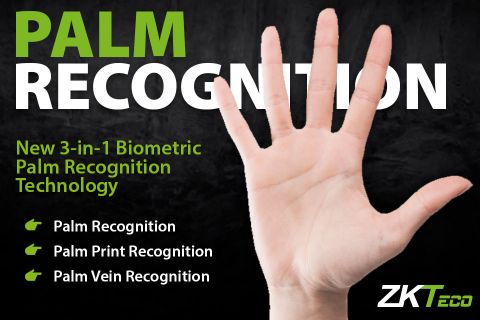Palm recognition biometrics powered by Computer Vision Technology
ZKTeco first introduced the touchless biometric palm recognition technology in 2016 which was a breakthrough for touchless biometric recognition. The previous technology was constrained by the angle of tolerance and the short recognition distance which resulted in an improvable user experience solution. After 5 years of R&D and the technological boom of Computer Vision technology, in 2020 ZKTeco launching the next generation 3-in-1 biometric Palm Recognition Technology.
An introduction to ZKTeco's palm recognition biometrics
ZKTeco's newest generation of palm recognition technology has been fully upgraded in all aspects in terms of recognition methods, which combine palm, palm print and palm vein recognition.
Incorporating a computer vision biometrics CPU, the whole recognition process takes place in 0.35 seconds. Moreover, computer vision technology has greatly enhanced the recognition performance, improving the angle of tolerance to +/- 60 degrees (roll axis), and the recognition distance (up to 0.5 meters upon the palm-size).
Most importantly, the anti-spoofing capability has reached a new height for the industry, as the testing results have shown. All the testing subjects including, fake HD photos, fake HD video, and fake palm models did not stand a chance when trying to crack the system.
How does the 3-in-1 biometrics palm recognition process work?
To understand ZKTeco's 3-in-1 palm recognition concept, let's see how the biometrics recognition process works:
1. Palm Recognition
When the palm is close to the camera, the camera will first activate the palm recognition process to identify whether it is an actual palm. If the nearing object is not a palm, it will stop any further recognition process. If the nearing object is a palm, it will pass it to the next step.
2. Palm Print Recognition
After the palm recognition process takes place, the infrared camera will be activated and start processing the palm print recognition and palm vein recognition simultaneously. The camera will recognize the feature point of the palm print and cross-check with the database.
3. Palm Vein Recognition
Meanwhile, the infrared camera will use the infrared light to observe the palm vein, which is normally unobservable by the human eye. In the same way as with the palm print, it will recognize the feature point of the palm vein and then cross-check with the database for its availability.
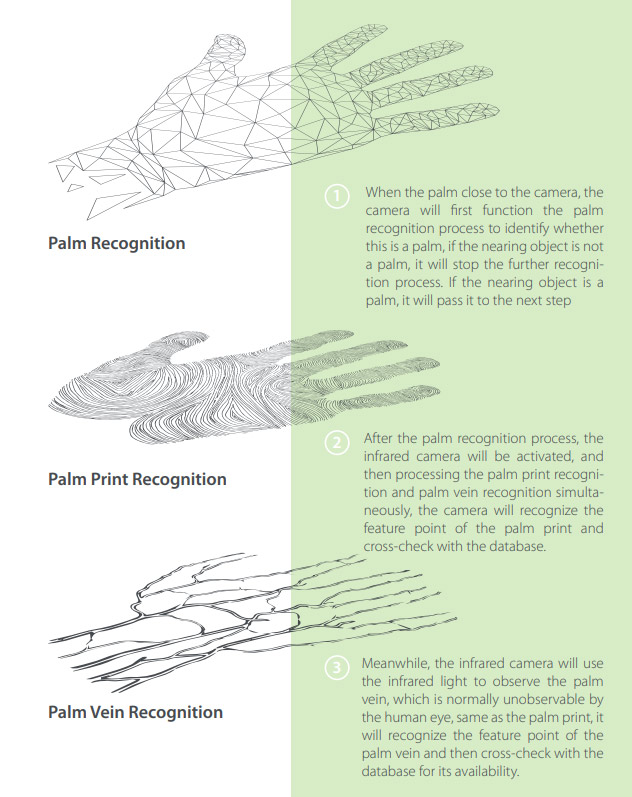
Technological Features
Let's explore the technological features of the Computer Vision technology in biometric Palm Recognition:
Anti-spoofing Technology
With the help of Computer Vision technology, the anti-spoof ability has been significantly enhanced. The 3-in-1 combination of the biometric palm, palm print and palm vein sets an extremely high bar for spoofing attacks to pass through. All attacks are guarded throughout three layers as follows:
1st Layer - Palm Recognition
The latest algorithm contains the palm recognition function, and it can identify whether the object is in proper “palm” shape. All the objects that are not in a proper “palm” shape will be identified as non-palm object and will be refused to process to the further recognition process.
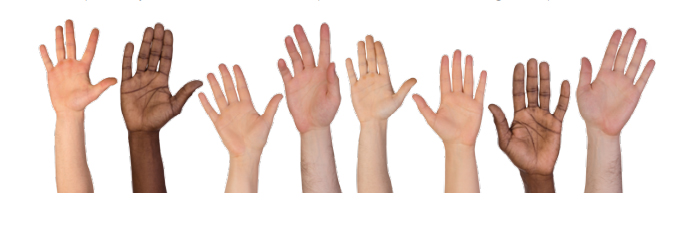
2nd Layer - Palm Print Recognition
After the 1st layer recognition, the palm shape object will go for the second recognition process and the infrared camera will recognize the palm print. The uniqueness of the human palm is formed by hundreds of thousands of lines, which make accurate replication of palm prints extremely hard. 90% of fake palm prints are identified and rejected in this stage.
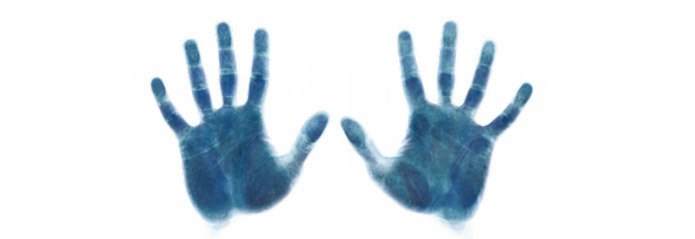
3rd Layer - Palm Vein Recognition
In this stage, the infrared camera will be activated. Under normal sunlight, palm vein cannot be imaged, but under infrared light (wavelength 700 – 900mm), the palm vein will become visible as the deoxygenated haemoglobin in the blood exhibits stronger absorption characteristics than moisture in other tissues and tissues under infrared light.
Utilizing a near-infrared light source to illuminate the palm, the venous blood in the shallow layer of the palm absorbs most of the light, while the body tissue such as the skin absorbs light and reflects it. In this imaging manner, the image sensor, the venous blood vessels, and other tissues are imaged with a substantial difference in brightness, which allows the structural distribution of the vein to be clearly distinguishable.
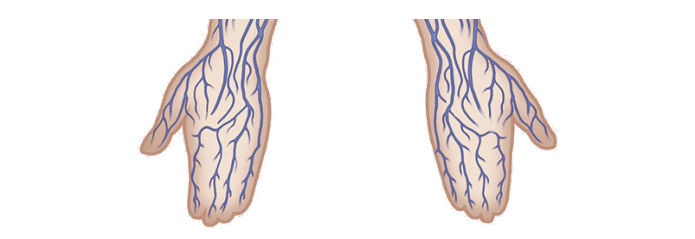
Hence, the complication of the process is to get a clear image of the palm vein, and the vein image is extremely complex for it involves millions of blood vessels and some of these vessels are as tiny as a hair, it is practically impossible to replicate a qualified fake palm vein model to pass the recognition process.
Wide Angle Tolerance
The latest palm recognition algorithm has been developed by combining Deep Learning, Computer Vision technology, and by implementing a Convolutional Neural Network (CNN) algorithm trained up with hundreds of thousands of palm images to completely define how palms look in numerous angles. Therefore, in this generation terminal, the angle tolerance of palm image can be extended to as wide as +/-60 degrees, in roll axis, and a slight angle twist, in both pitch and yaw axes, which almost reaches the critical point of the widest-angle acceptance of palm posture.
Ultra-long Recognition Distance
In recent years with the help of booming HD image sensors and HD infrared camera technology, obtaining a clear palm, palm print and palm vein image in the range of 10 – 60 cm is simple. With ZKTeco’s biometrics processing unit, the whole recognition process can be finished in barely 0.35s, which is absolutely one of the finest in the industry.
Get the latest updates right in your inbox
Do you want to receive our latest Time Management, Access Control, and Software Solutions in your inbox? Subscribe now to ZKTeco Europe's Newsletter:
You might also be interested in the following news:

